Last updated on 2025-06-04
A review and photo example of the LEICA Super Elmarit 15mm with the Film camera and Digital camera.
Table of contents
Gallery
- LEICA R8 +PORTRA 160 +DiMAGE Scan Multi PRO
Review
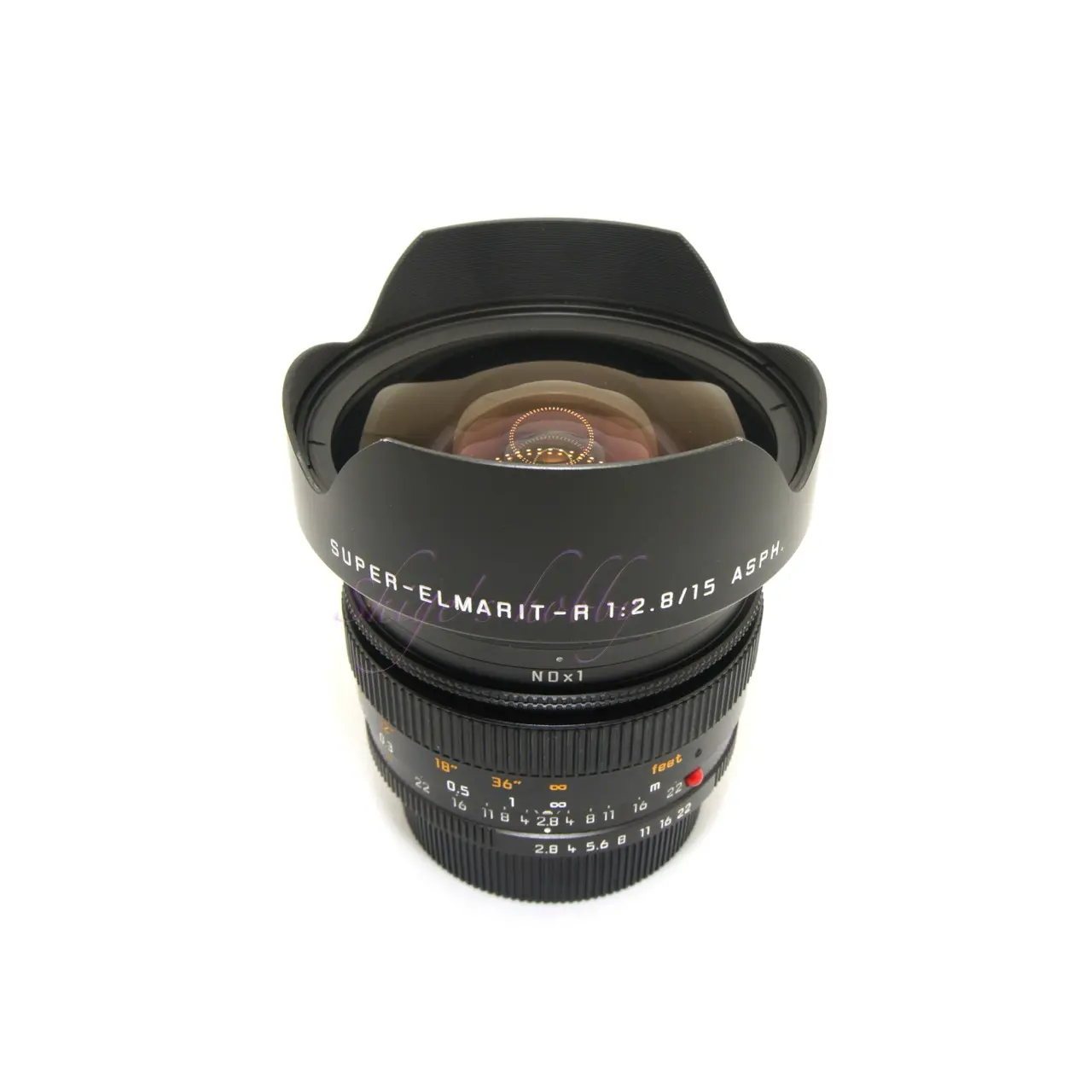
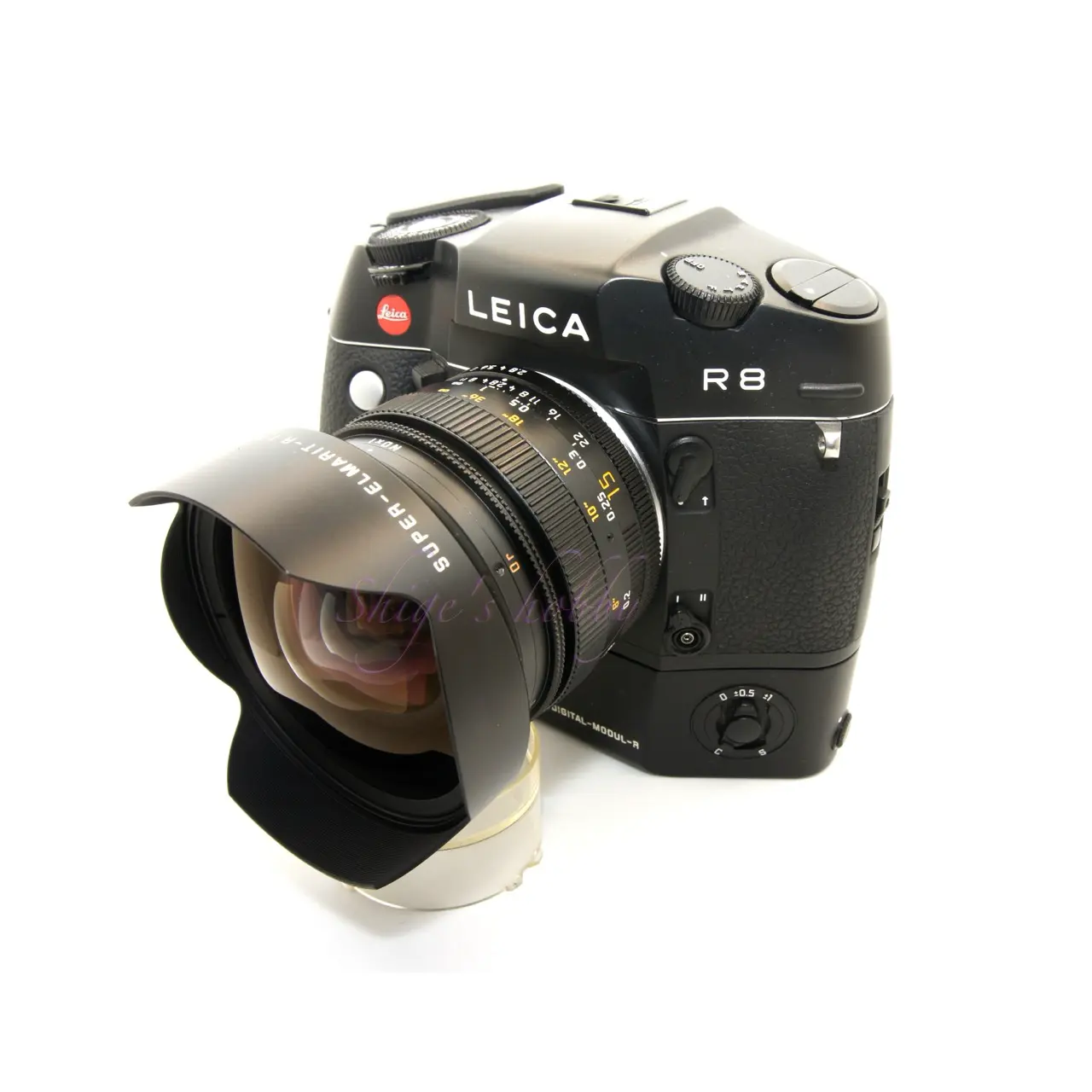
1.Overview
The Super-Elmarit 15mm was produced for eight years, from 2001 to 2009. Only 420 units were made.
The shape of the hood means that a filter cannot be attached to the front lens. Therefore, a slip-on cap is included to protect the lens. However, since there is no stopper and it is simply attached, it is easy to come off in a bag with a lot of space for the camera, so care must be taken to ensure that there is no space in front of the cap when storing it.
The main specifications of the lens are 13 elements in 10 groups, 6 aperture blades, a minimum shooting distance of 0.18m, and 4 color filters built into the lens barrel.
It has the same structure as Leica R-mount manual focus single-focus lenses, with a focus ring near the front center of the lens barrel and an aperture ring at the base of the lens barrel. The aperture ring has click stops every half step.
The serial number tells us that the lens I have is one of 100 manufactured in 2002. The 2000s, when this lens was released, was a time when the Japanese currency, the yen, was relatively strong, so it is thought that some of it was imported, but the exact number is unknown.
2.Usability
The Super-Elmarit R 15mm is a Leica R mount lens with a focal length of 15mm.
This lens is smaller and lighter than the Super-Elmar R 15mm, so it looks good on a small mirrorless camera.
I thought it would be nice to try using 35mm film in the Leica R8 as a 15mm lens, so I loaded it with some PORTA 160 negative film that had been lying around in the fridge and started shooting.
The R8 is an electronic device, so it needs power to operate, and when I attached two CR2s that had expired in 2013 that I had in my room, the camera started up without any problems. These CR2s had been purchased for the film camera GR1, but since I sold the GR1, they had been lying around without any use.
I removed the DMR from the R8 and replaced the back of the camera with a regular film one, and changed the focusing screen from the DMR one to a film microprism screen 14343. However, it was not suitable for composing a 15mm wide-angle lens, so I purchased and use the grid screen 14346.
The R8 and R9 focusing screens, which were quite common in the 2010s, have disappeared from the market since the 2020s. I found the grid screen 14346 on Google, so I bought it without hesitation, even though it was quite expensive.
According to “Leica R-Lenses by Erwin Puts November 2003 Chapter 6: 15 mm lens __ LEICA ELMARIT-R 15 mm f/2.8” distributed by Leica in 2003, the microprism screen 14343 is recommended to find the focus peak with the Super-Elmarit 15mm.
The grid screen is certainly useful for composing, but when turning the focus ring, it is difficult to determine the focus peak on the screen, so shooting is mostly done by eye.
When shooting with film, if you narrow the aperture a little, there is almost no problem with eyeballing. When shooting with a digital SLR camera, if you shoot by eyeballing, you can see that the focus position is off because it is not sharp when you enlarge it on the monitor. The only way to solve this is to improve your ability to detect the focus position when looking through the viewfinder. With digital cameras, mirrorless cameras can check the focus position using the EVF magnification function, so there is no problem.
If my DMR (LEICA DIGITAL MODULE R) was still working, I could use it as a wide-angle lens with a focal length of 21mm, but unfortunately my DMR is already broken and has become a paperweight, so I was unable to use it.
When I used it with a Hasselblad X2D, I confirmed that the usable area does not cover 76% of the medium format digital sensor (44 x 33mm) and does not cover the range beyond 35mm film and 35mm full-frame sensor. This is also due to the fixed hood, so if I cut the fixed hood, the shooting range will expand, but that is not possible.
As a Leica R lens freak, I have been looking for this lens for a long time. I would occasionally see it on eBay, but when I was thinking of buying it, the yen was depreciating rapidly, so the option of buying from overseas had almost disappeared.
At that time, a camera shop I was familiar with had acquired one from a collector, and I was approached about purchasing it, and I was able to acquire it in excellent condition, complete with lens box and other accessories.
3.Summary
In conclusion, to sum up the Super-Elmarit R 15mm, it is a lens that tests your mental flexibility as you devise ways to use the extraordinary focal length of 15mm depending on the shooting location.
Zoom lenses have made remarkable progress in the ultra-wide-angle range, leaving prime lenses in a difficult position, but it is encouraging that as we enter the mirrorless era, more advanced design software and improved manufacturing technology have led to the release of new wide-angle prime lenses.
Even so, the Super-Elmarit R 15mm, which achieves a compact size as an ultra-wide-angle lens for SLR cameras with a long flange back, will never fade.
Specification and Specification
The most appropriate direct comparison with the Super-Elmarit-R 15mm would be with the Super-Elmar-R 15mm.
The Super-Elmarit-R 15mm was designed by Schneider, not Leica, while the Super-Elmar-R 15mm was designed by Carl Zeiss. There is no documentation on who manufactured them.
A detailed comparison of the two lenses is available in “Leica R-Lenses by Erwin Puts November 2003 Chapter 6: 15 mm lens __ LEICA ELMARIT-R 15 mm f/2.8” published by Leica in 2003.
The following is a partial excerpt from the article, which is roughly the content of the article. This document contains detailed discussion of ultra-wide-angle lenses over 17mm, and is very useful.
- Difference in focal length: Super-Elmarit is 15.6mm, Super-Elmar is 15.4mm
- Distortion: Super-Elmarit is up to 2%, Super-Elmar is up to 4%
- The article points out that the distortion curve is more important than the maximum value.
- The degree of improvement in peripheral light falloff due to vignetting improves with one stop for Super-Elmarit, and with 2.5 stops for Super-Elmar.
There is no other direct comparison between the two, but the article devotes a lot of text to explaining the improvement in image quality.
Looking at the summary alone, there doesn’t seem to be much difference, but it’s up to the photographer to decide whether to consider this an evolution of 20 years or more, or whether Super-Elmar is sufficient.
Carl Zeiss’ Distagon 15mm, a representative old 15mm lens, has sister lenses sold by several manufacturers, including the Super-Elmar 15mm, through OEM and blueprint sales.
Schneider’s 15mm lenses do not seem to be provided to anyone other than Leica.
Apart from the Super-Elmar, there are very few prime lenses with a focal length of 15mm that cover the 35mm format, such as the Zeiss Distagon 15mm ZM, Voigtlander Super Wide Heliar 15mm (1999), and Zeiss Hologon 15mm (1972) for rangefinder cameras, and, excluding the Zeiss Distagon 15mm F3.5 series for SLR cameras, the new Zeiss Distagon 15mm F2.8 and LAOWA 15mm F4 WIDE ANGLE MACRO (2016).
As for the wider 14mm range, Sigma has released several 14mm prime lenses for SLR cameras in the past, with the 14mm F1.4 DG DN | Art | being the pinnacle. For mirrorless cameras, several manufacturers offer lenses such as the Sony FE 14mm F1.8 GM G Master (2021), Samyang 14mm F2.8, and Pergear 14mm F2.8 II.
When Leica does not have the resources to develop its own lenses, it uses other companies. This attitude has not changed, including the L39 screw, Leica M, Leica R mount, and the L-mount alliance in the 2020s. There is no need to do everything in-house.
The comparison image below shows the SUPER ELMAR 15mm replaced with the DISTAGON 15mm, which has the same lens configuration.
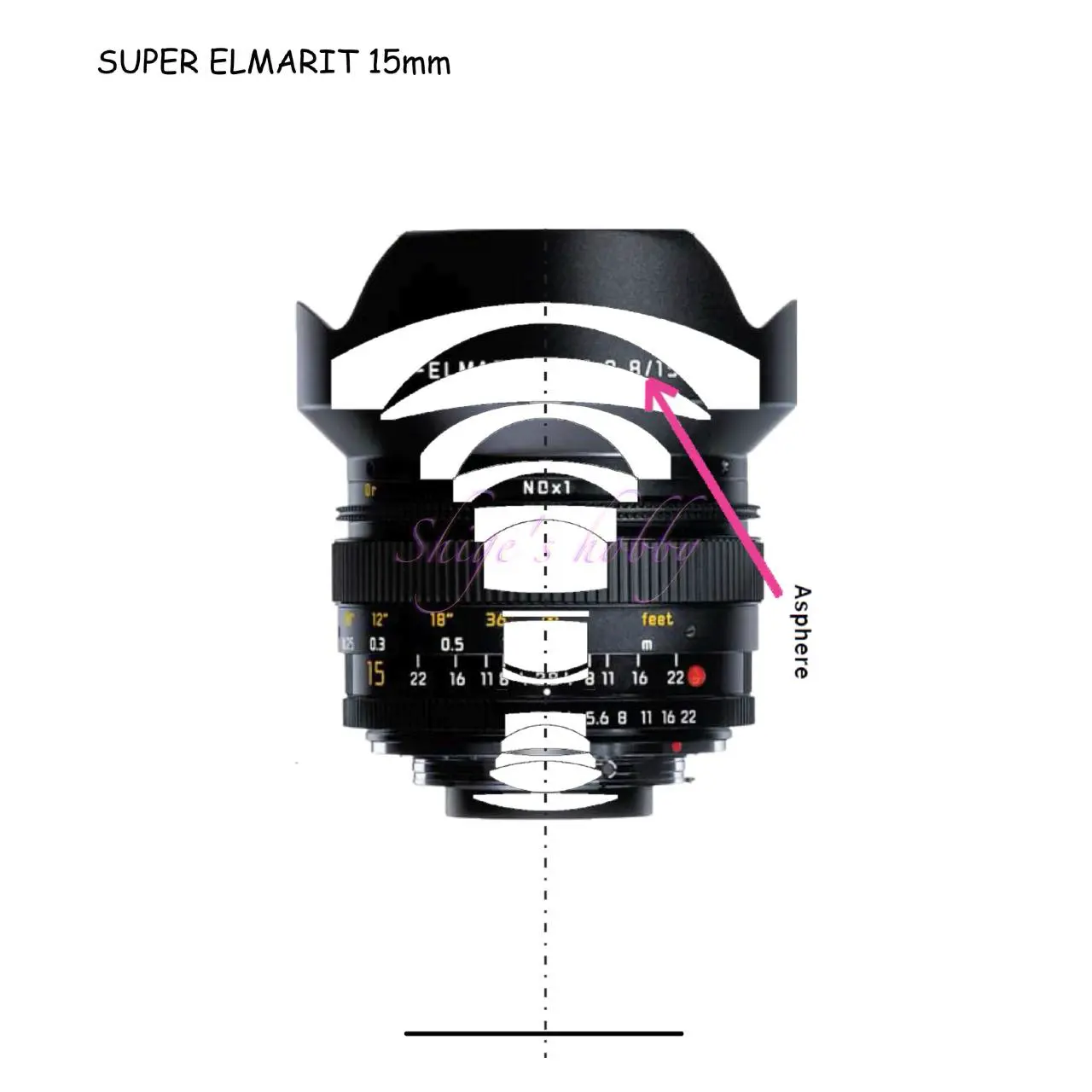
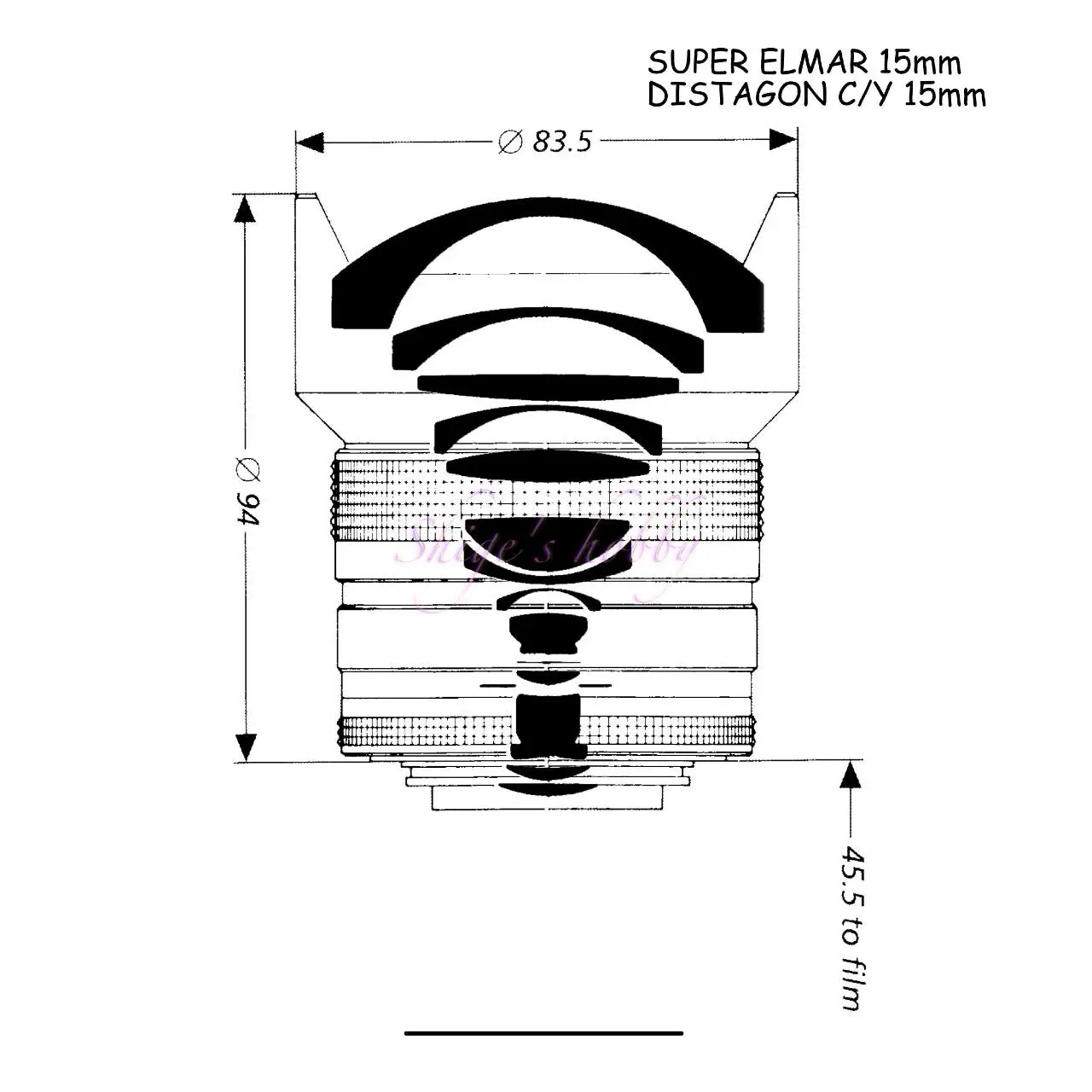
- The lens construction diagrams are quoted from each company’s materials, and the sizes have been adjusted by us, so they are not exact.
| Lens name | SUPER ELMARIT | SUPER ELMAR |
| Focal length(mm) | 15 | ← |
| Max aperture | 2.8 | 3.5 |
| Min aperture | 22 | ← |
| Leaf blade | 6 | 5 |
| Lens Construction | 13 elements in 10groups | 13 elements in 12groups |
| Min distance(m) | 0.18 | 0.16 |
| Lens length(mm) | 85.3 | 92.5 |
| Max diameter(mm) | 83.5 | 83.5 |
| Filter Size(mm) | – | – |
| Front Cap | Special metal hood | 14294 |
| Weight(g) | 710 | 815 |
| Release date | 2001 | 1979 |
| Production number | 420 | 2980 |
Reference links
Update history
- 2025.2.3
- 2024.10.5
- 2024.02.17
- 2023.11.17
Affiliate links
- Please see the disclaimer regarding advertising here.
- Italicized links in the text are advertisement links that take you to other sites.


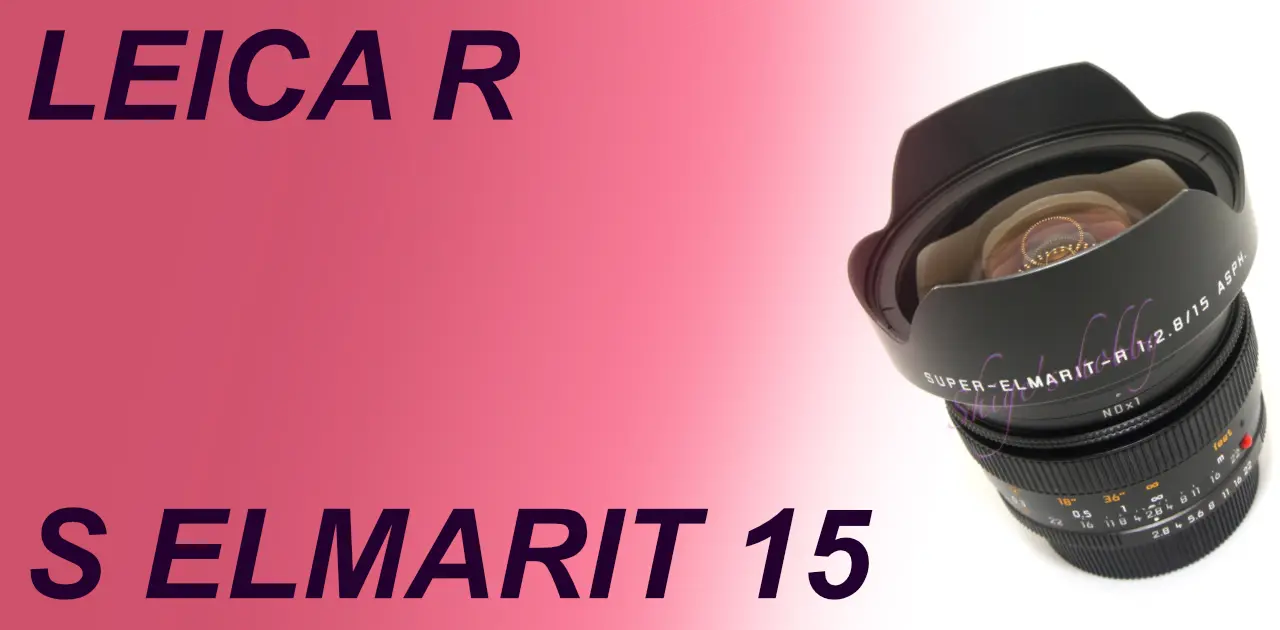

Be First to Comment